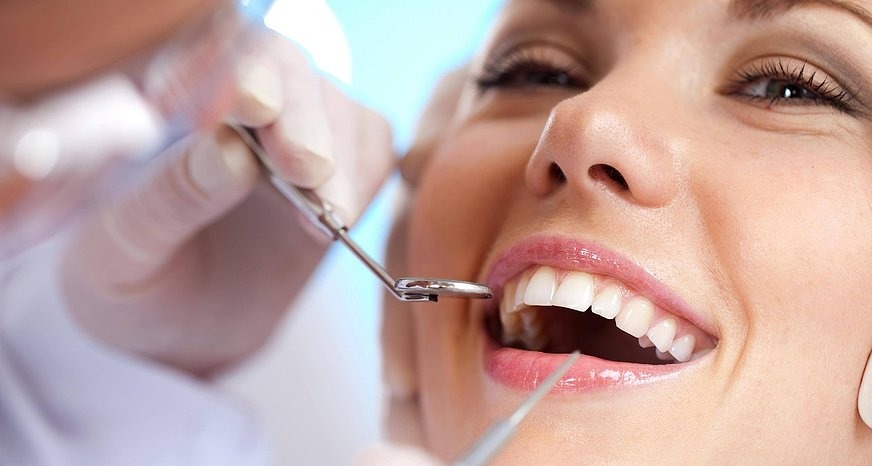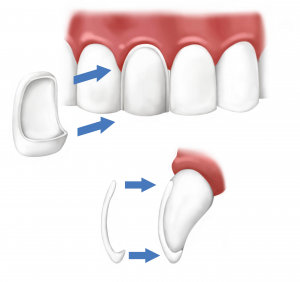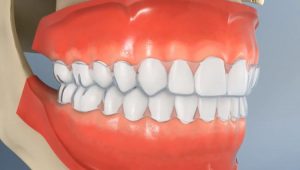Dental veneers are a great way to improve the look of your teeth and create the smile that you have always dreamed about. The veneer itself is a thin layer of porcelain or a natural-colour composite material, that is fixed over the front of the tooth for a natural, healthy-looking result. Veneers can hide imperfections, such as discolouration or chipped or protruding teeth, as well as help, reposition the teeth to close small gaps and improve their overall alignment.
There are many types of veneers available, so it is prudent to discuss all the options with your dentist to ensure that you choose the right one for your individual circumstances. The process is normally straightforward, with treatment taking place over a series of appointments. After measurements and impressions have been taken, a 3D preview model is created using CAD and examined from all angles to ensure a perfect fit. The teeth are carefully prepared with a thin layer trimmed away from the surface and biting edge to make room. A temporary veneer may be attached to start with to allow for any finer adjustments needing to be made, before the patient returns for their final fitting of the permanent veneer.
So, what are some of the types of dental veneers available, and how do they differ in function, aesthetics and cost?
Different Kinds Of Veneers
Porcelain veneers
These are the most traditional type of veneers, used as far back as the 1930s to help actors with their smiles. Durable and highly versatile, 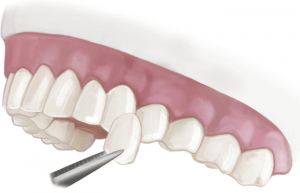
Downsides include a slightly higher possibility of discomfort during the application, as well as some permanent damage to your natural teeth caused by trimming off some of the enamel to ensure a strong bond. They may also be harder to repair if they become chipped or cracked. They are, however, still one of the strongest types of veneer on the market today
Natural-colour composite veneers
Also known as bonded veneers, these offer a natural, healthy look for a slightly lower budget than porcelain alternatives. They will not last quite so long, however, with an anticipated lifespan of five to ten years. They are also more prone to staining and chipping. They can, however, be repaired and replaced much more easily with less inconvenience to the patient.
Natural-colour composites are applied in layers directly onto the surface of the tooth. The veneer is then sculpted precisely to achieve the desired results. Once shaped, it is polished and smoothed to replicate the look of your own teeth. Composite veneers can be very closely colour matched for incredibly authentic aesthetic results.
Lumineers
Another less invasive option is the Lumineer veneer, quicker to attach and not requiring the teeth underneath to be trimmed or shaved before being applied. Lumineer veneers are very thin – about the same as a contact lens and can be completely reversible if the patient ever requires them to be removed. Treatment is pain-free and the results can last for up to twenty years with careful handling and diligent dental hygiene. While you can still eat and drink as normal, it is advised to maintain thorough teeth cleaning routine and visit the dentist for check-ups every six months.
Lumineer veneers can be less effective on highly discoloured or stained teeth, due to their extreme thinness and translucent properties allowing the original teeth to show through. Another issue that Lumineer veneers can be effective at resolving is covering up unsightly previous dental work, such as crowns or bridgework, as well as cracks, chips and misaligned or underdeveloped teeth.
Zirconia
Zirconia veneers are great for more severely damaged or decayed 
Zirconia is also used to make dental crowns and implants, such is its strength and versatility. Zirconia veneers can last for anything between five and 20 years and regular check-up visits are recommended to keep them in the best possible condition. Zirconia veneers tend to be at the higher end of the price range for dental veneers.
Palatal
Palatal veneers sit on the back of the upper teeth to help strengthen them and reduce the effects of general wear and tear. They can be made from a number of materials, from porcelain and composites to gold. Palatal veneers are especially effective in cases of dental erosion. Treatment is most effective if the problem is caught and acted upon quickly as they can then help strengthen the teeth before severe damage compromises their overall quality and performance.
Due to the fact that they are applied to the backs of the teeth, there is less emphasis on aesthetics and more on performance, thus making them a highly desirable option for more serious tooth-related medical concerns. They can also help realign teeth that are crooked, as well as close up any smaller gaps.
Non-permanent veneers
Non-permanent veneers are commonly used ahead of having porcelain or 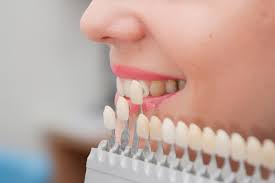
Another growing market for non-permanent veneers is amongst people who don’t want to commit to having permanent veneers fitted for various reasons, such as pain, flexibility and cost. Having this option available for a shorter time period is also attractive to people in the performing arts industry, or those who want to alter their look for special occasions like a wedding or party.


